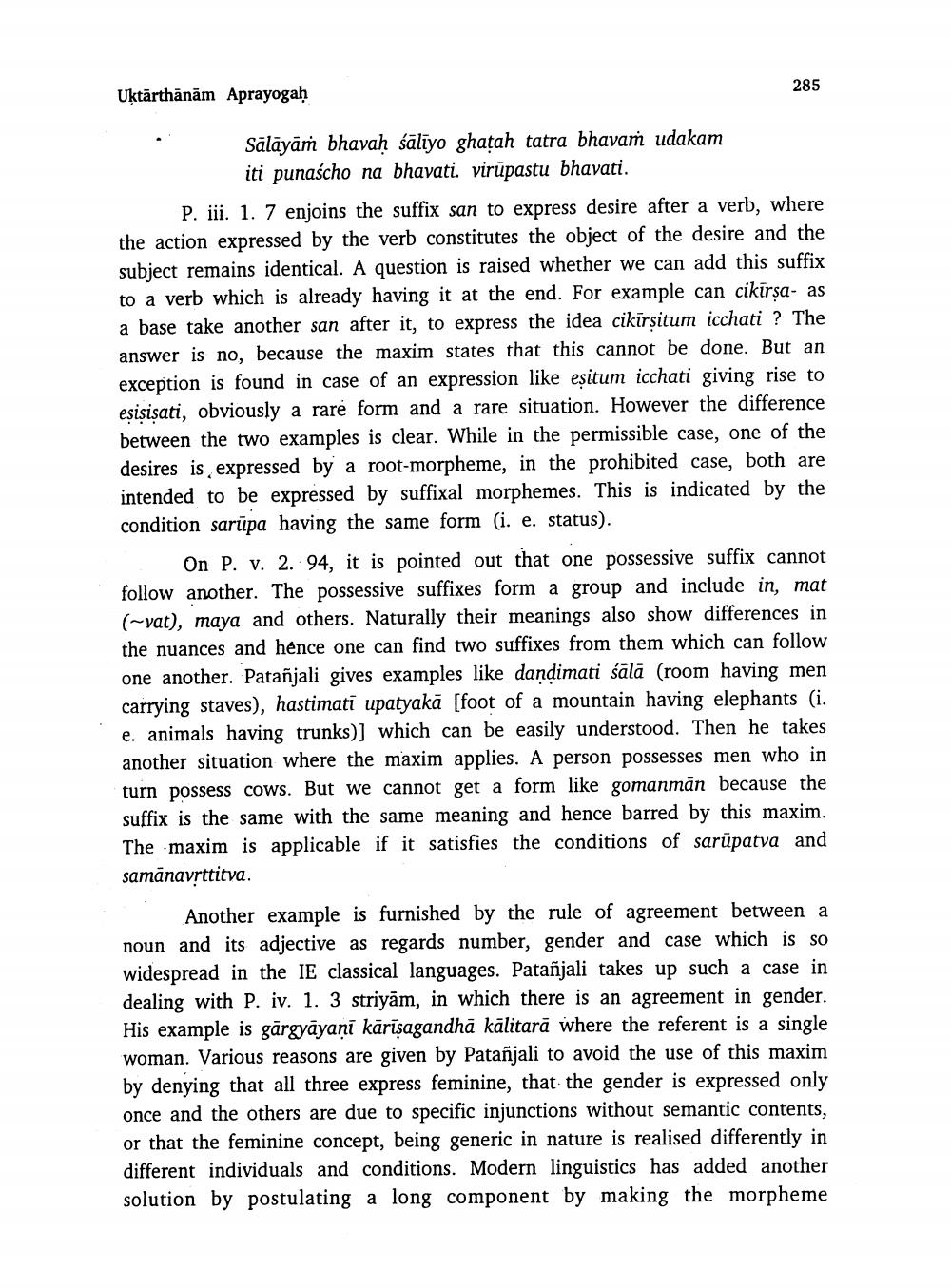________________
Uķtārthānām Aprayogah
285
Sālāyāṁ bhavah sālīyo ghatah tatra bhavam udakam
iti punaścho na bhavati. virūpastu bhavati. P. iii. 1. 7 enjoins the suffix san to express desire after a verb, where the action expressed by the verb constitutes the object of the desire and the subject remains identical. A question is raised whether we can add this suffix to a verb which is already having it at the end. For example can cikīrsa- as a base take another san after it, to express the idea cikīrsitum icchati ? The answer is no, because the maxim states that this cannot be done. But an exception is found in case of an expression like eșitum icchati giving rise to eşisisati, obviously a rare form and a rare situation. However the difference between the two examples is clear. While in the permissible case, one of the desires is expressed by a root-morpheme, in the prohibited case, both are intended to be expressed by suffixal morphemes. This is indicated by the condition sarūpa having the same form (i. e. status).
On P. v. 2. 94, it is pointed out that one possessive suffix cannot follow another. The possessive suffixes form a group and include in, mat (~vat), maya and others. Naturally their meanings also show differences in the nuances and hence one can find two suffixes from them which can follow one another. Patañjali gives examples like dandimati śālā (room having men carrying staves), hastimati upatyakā [foot of a mountain having elephants (i. e. animals having trunks)] which can be easily understood. Then he takes another situation where the maxim applies. A person possesses men who in turn possess cows. But we cannot get a form like gomanman because the suffix is the same with the same meaning and hence barred by this maxim. The maxim is applicable if it satisfies the conditions of sarūpatva and samānavrttitva.
Another example is furnished by the rule of agreement between a noun and its adjective as regards number, gender and case which is so widespread in the IE classical languages. Patañjali takes up such a case in dealing with P. iv. 1. 3 striyām, in which there is an agreement in gender. His example is gārgyāyaṇī kārīsagandhā kālitarā where the referent is a single woman. Various reasons are given by Patañjali to avoid the use of this maxim by denying that all three express feminine, that the gender is expressed only once and the others are due to specific injunctions without semantic contents, or that the feminine concept, being generic in nature is realised differently in different individuals and conditions. Modern linguistics has added another solution by postulating a long component by making the morpheme




